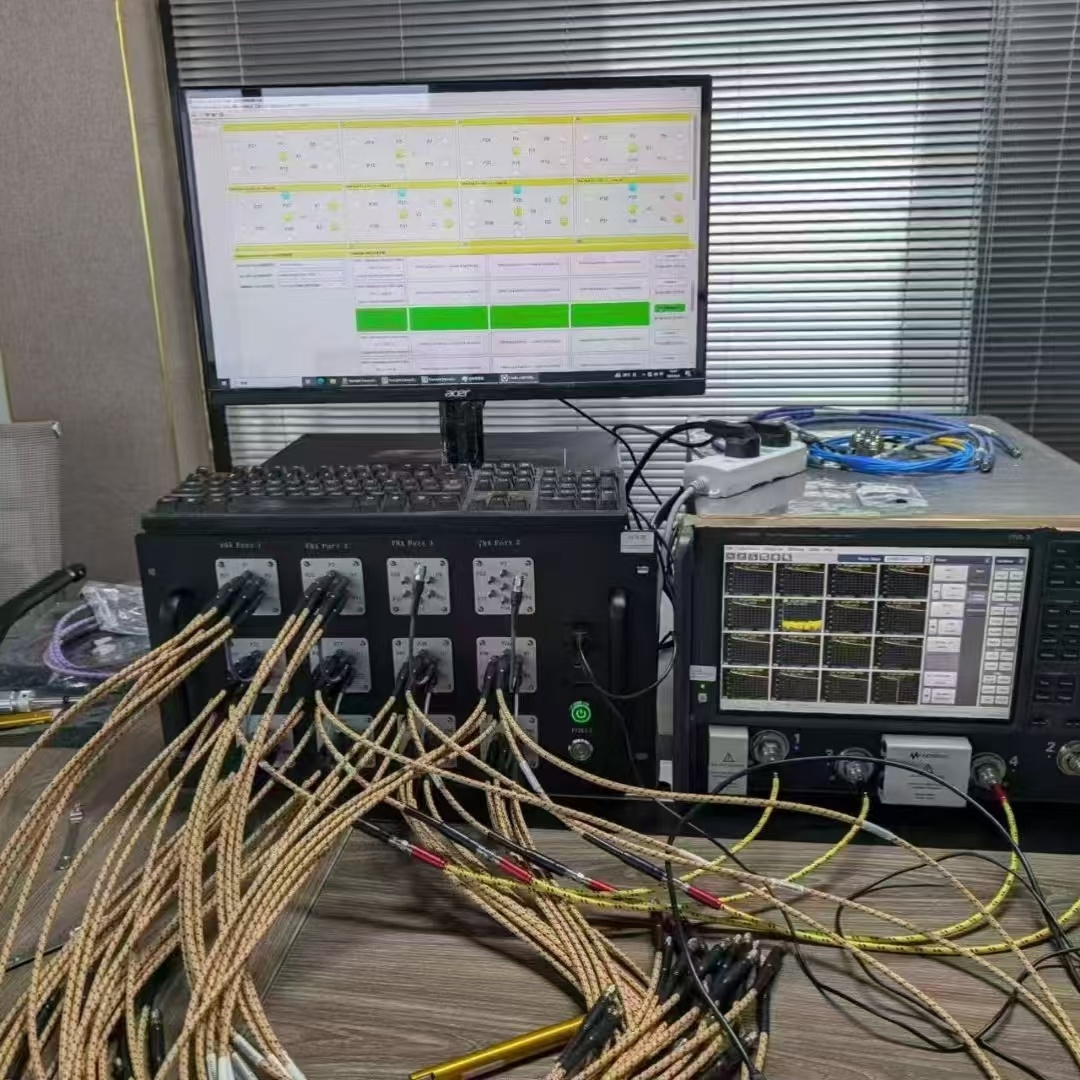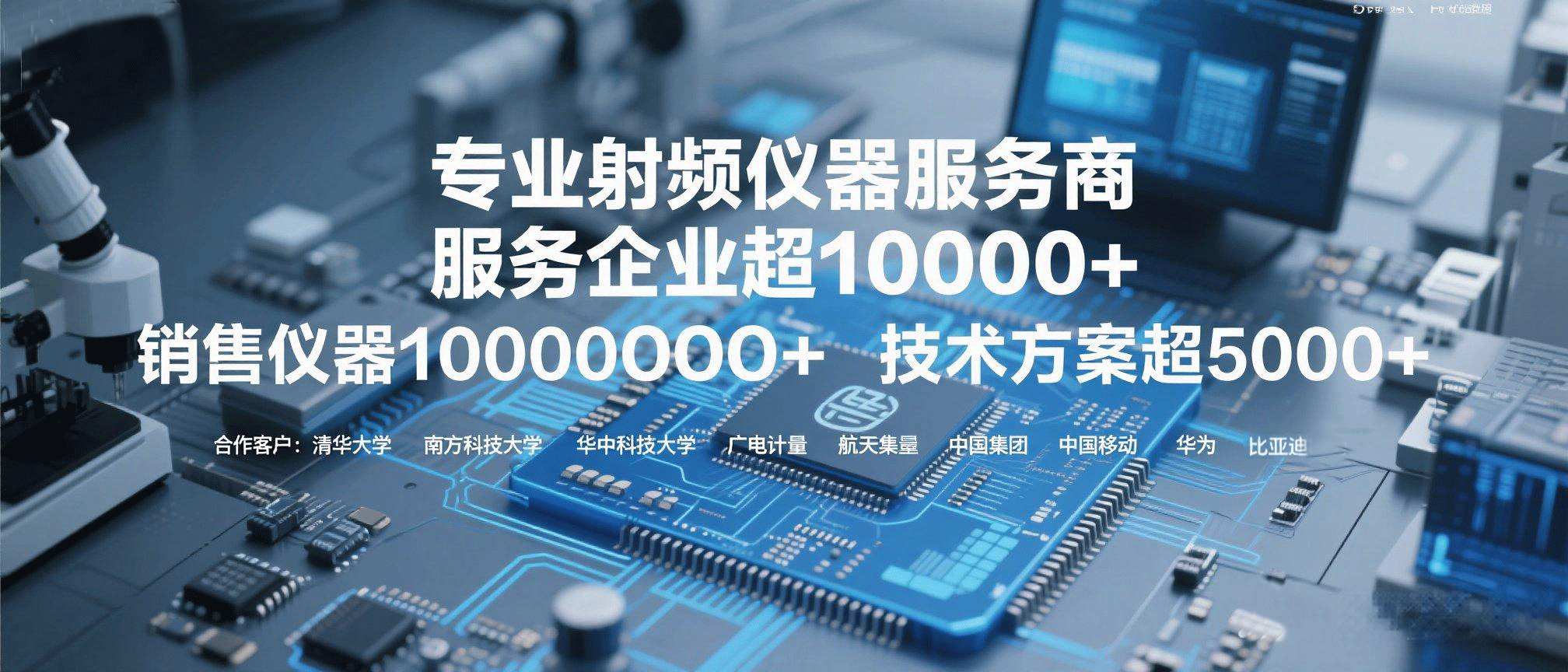-
High-frequency measurement system services Material testing Probe station Microwave anechoic chamber/shielded roomLan Cable Fully Automatic Tester Auto Switch fully automatic testing machine USB 4 / Type-C finished product line test system DisplayPort 2.1 finished product line test system HDMI 2.1 finished product line test system MCIO finished product line testing system Gen-Z finished product line testing system PCIE finished product line test system OCuLink Finished Product Line Test System QSFP/SFP finished product line test system HSD finished product line test system FAKRA finished product line testing system SAS/MiniSAS/SlimSAS Finished Product Line Testing System Raw Cable 20G/40G/50G Bare Wire Test System SATA/eSATA finished product line test system LVDS finished product line testing system Pre-test Integration ProjectElectromagnetic shielding test system Material electromagnetic parameter testing system Resistivity testing system Cable Shielding Effectiveness Test System Conductive gasket shielding effectiveness test system Reflection rate test system for absorbing materials NSS Noise Suppression/Absorption Sheet Performance Evaluation System Pre-compatibility testing systemUltra-low temperature vacuum probe station Automated probe station Manual probe station Displacement platform


Why do oscilloscopes need optical isolation probes?
Category: FAQ
Release time: 2025-03-05
Why do oscilloscopes need optically isolated probes?
An optical isolation probe, also known as an Optical-fiber Isolated Probe, is a type of measurement probe for oscilloscopes. In the field of test and measurement, the signal acquired by the front end of a high-voltage differential probe is generally transmitted to the back-end test equipment via a cable. This cable transmission method has the following disadvantages:
1. Non-insulated, no safety in high-voltage situations, electrical isolation cannot be achieved between the test point and the test equipment;
2. The cable has parasitic capacitance, inductance, and resistance characteristics, limiting the bandwidth;
3. It is difficult to simultaneously meet the indicators of high voltage, low voltage, high bandwidth, and signal integrity;
4. Poor suppression ability for high-voltage, high-frequency common-mode interference.
However, high-voltage differential probes also have some advantages:
1. Cost-effectiveness: High-voltage differential probes are typically more economical than optically isolated probes.
2. Simplicity: High-voltage differential probes are relatively simple to use and maintain, and do not require complex fiber optic or optoelectronic conversion technology, making them easier to operate.
Optically isolated probes are also used to measure differential signals. Their principle is based on the photoelectric effect and physical isolation technology. They convert electrical signals into optical signals, transmit them via optical fiber to the other end, and then convert the optical signals back into electrical signals, thereby achieving complete electrical isolation between signal input and output. This conversion not only provides an extremely high common-mode rejection ratio (CMRR), providing excellent common-mode rejection performance across the full bandwidth, but also features high isolation voltage and a wide measurement range.
The working principle of an optically isolated probe can be summarized in the following steps:
1. The electrical signal is converted into a laser signal at the front end of the probe.
2. The laser signal is transmitted to the back end of the probe via optical fiber.
3. At the back end of the probe, the laser signal is converted back into an electrical signal.
The principle diagram is shown in the figure below. This probe mainly includes an attenuator, an electro-optical-electrical conversion network, a lossless transmission line, and an oscilloscope connector.
Key word: Why do oscilloscopes need optical isolation probes?
Previous Page
Next Page
Previous Page
Next Page
Related Information
Unveiling the Mystery of Anli: Understanding its Working Principles
Understand the working principle of Anli and explore its applications and impact in modern technology.
2025/05/22
Anly's precautions: Make your life easier
Explore precautions for Anli to make your life smoother and avoid unnecessary trouble.
2025/05/21
Contact Information
Add.: 2nd Floor, Building C, Zhongzhi Zhichuang Park, Yucui Community, Longhua Street, Longhua District, Shenzhen City, Guangdong Province, China
Tel: +86-135 1042 6680
Email: harriosn@sengt.com
Follow us


Follow us
Copyright © Shenzhen Sengt Co., Ltd.
COOKIES
Our website uses cookies and similar technologies to personalize the advertising shown to you and to help you get the best experience on our website. For more information, see our Privacy & Cookie Policy
COOKIES
Our website uses cookies and similar technologies to personalize the advertising shown to you and to help you get the best experience on our website. For more information, see our Privacy & Cookie Policy
These cookies are necessary for basic functions such as payment. Standard cookies cannot be turned off and do not store any of your information.
These cookies collect information, such as how many people are using our site or which pages are popular, to help us improve the customer experience. Turning these cookies off will mean we can't collect information to improve your experience.
These cookies enable the website to provide enhanced functionality and personalization. They may be set by us or by third-party providers whose services we have added to our pages. If you do not allow these cookies, some or all of these services may not function properly.
These cookies help us understand what you are interested in so that we can show you relevant advertising on other websites. Turning these cookies off will mean we are unable to show you any personalized advertising.




